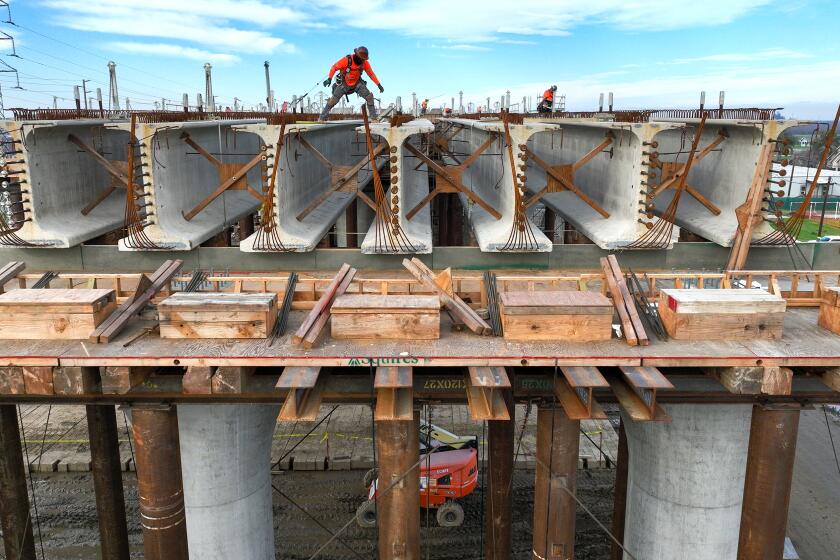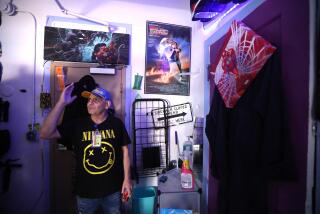In Kern County, an abandoned church gets a second life as housing for former foster youths
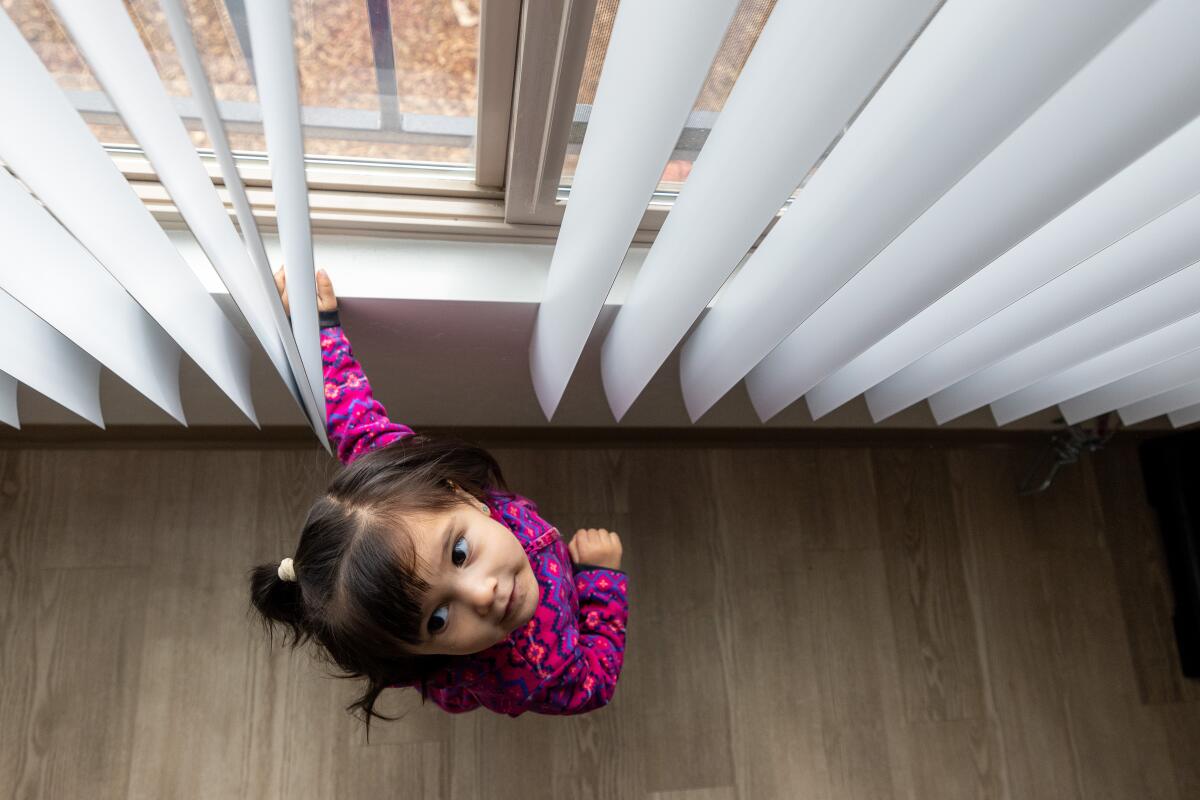
OILDALE, Calif. — The church on Oildale Drive and Minner Avenue has stood on the corner since 1954, built after an earthquake damaged the Oildale Church of Christ’s building. Since then, the church has passed through a variety of denominations and congregations until it was abandoned in 2021.
But the Kern County Housing Authority saw another life for the church building, in an often-overlooked area of the county. Oildale, an unincorporated town north of Bakersfield, borders the Kern River Oil Field, one of the largest active oil fields in California. The town was founded in the early 1900s as workers flooded into the area to work the oil rigs. It’s where musicians Buck Owens and Merle Haggard were raised and shaped.
Today, the barren hills of the Kern River Oil Field are still peppered with working rigs. But Oildale, population 36,000, has largely stagnated. Nearly a third of its residents live in poverty, and community leaders grapple with high rates of opioid addiction, dilapidated housing and commercial vacancies. The church is nestled in a quiet neighborhood of modest homes with overgrown yards and bleached white fences.
The housing authority, a county agency charged with creating affordable housing opportunities, saw potential in the building’s graceful touches and sturdy walls. Its Sunday school classrooms could become studio and one-bedroom units for former foster youth still struggling to get their footing. The chapel, with its stained glass window, soft-lit chandeliers and walls adorned with hand-written Bible verses, could be converted into a community room. So, over the course of two years, the church was given a second life.
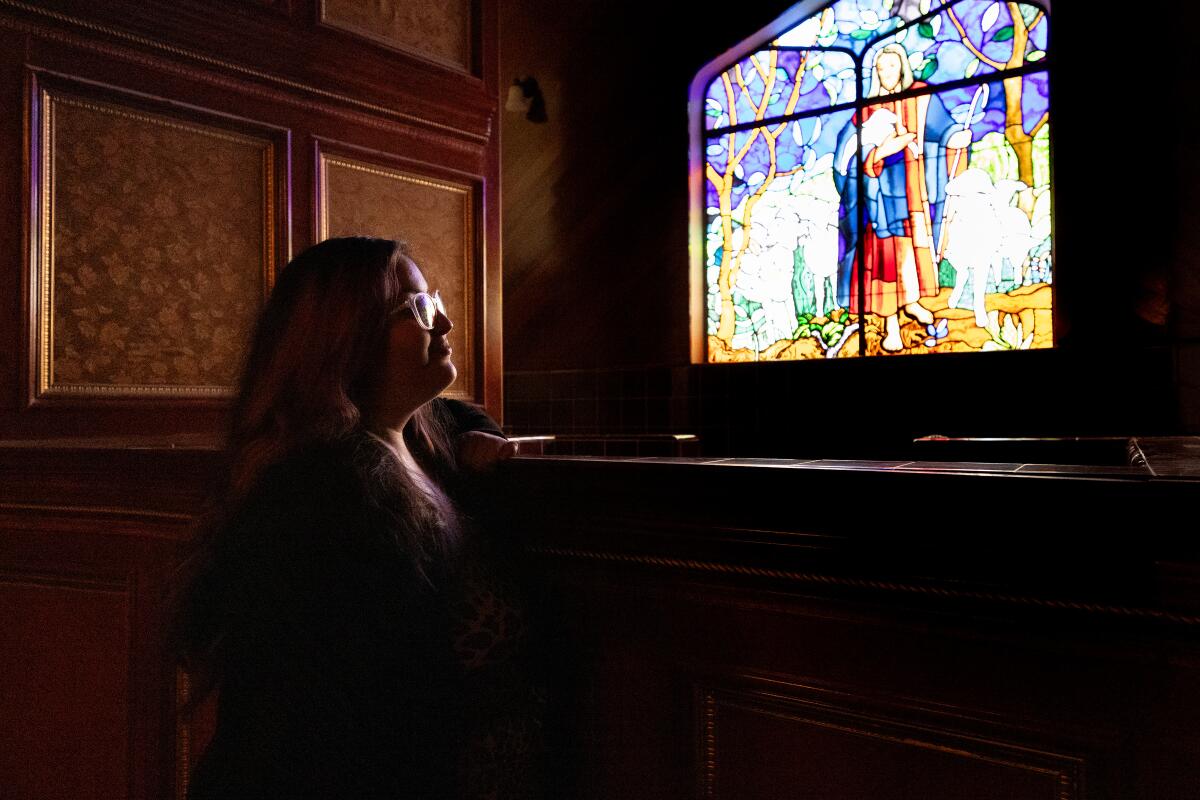
“It’s been an anchor for the neighborhood for a number of years and went through different phrases, and is now in a completely different phase,” said Stephen M. Pelz, executive director of the housing authority. “Oftentimes when you get vacant buildings that aren’t sold right away, they end up having issues or vandalism, or catching fire. It was nice to be able to preserve the building.”
With funding from Project Homekey, the state’s multibillion-dollar effort to convert dilapidated motels and commercial properties into supportive housing, and in partnership with Covenant Community Services, the authority purchased the church from Shekinah Ministries in 2022 for $1.5 million. After extensive renovation, the site reopened in January as the Project Cornerstone housing complex.
Today, the hallways smell faintly of fresh paint, and all 19 air-conditioned units are occupied by young residents also getting a fresh start.
About a mile away in a commercial strip, the housing authority is attempting another novel do-over: converting a former doctor’s office — that also had a stint as a tattoo parlor — into 15 units of housing. The project is in a tumbledown section of Oildale, situated between an optical lens store and aquatic pet shop. The storefront being converted had been vacant for years.
For Central Valley residents, high-speed rail will be a reality in just a few years. Construction of the rail line is transforming local economies, and residents say they see a broad new horizon when it comes to accessing jobs, healthcare and education.
“It was really just awful, an eyesore for the whole community,” said Randy Martin, chief executive of Covenant Community Services, a nonprofit community group that will manage the two locations.
The housing authority purchased the storefront for $510,000 in 2022. As renovations began, Martin said, the group dealt with drug addicts breaking in, stealing appliances and starting fires behind the building.
Still, the project is moving forward. Each unit will have a doorbell and space for a bed and kitchen. The plan includes a front patio where residents can relax and socialize.
Housing at the church complex is open to young people, 18 to 25, who have aged out of the foster care system, along with their spouses and children. The converted doctor’s office is reserved for former foster youths ages 18 to 21. Tenants pay rent as they are able, on a sliding-fee scale, and utilities are covered.
Pelz said the subsidies and upkeep will be covered by a mix of rental income and state and local funding for rental assistance.
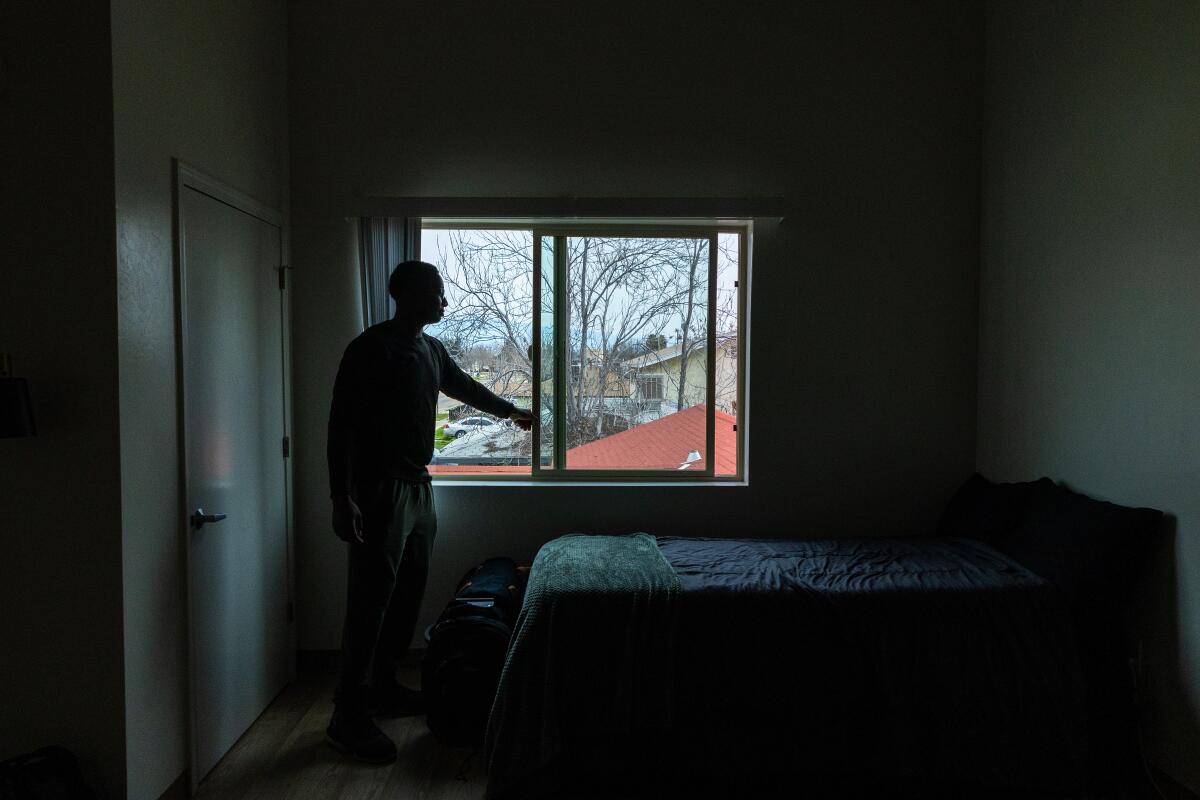
When he moved into the converted church on Oildale Drive, Al’Lyn Cline, 22, was the only person living there for about two weeks. After months of construction, the church began to “settle,” and at night he would hear the creaking of the pipes and floorboards.
Cline, a Texas native, bounced around foster homes as a child. Before coming to the church, he stayed at a sober-living home with 12 other men. They shared one refrigerator, cramped bathrooms and limited parking space.
At the church, Cline has a studio that came furnished with a microwave, stove and fridge. He has his own bathroom for the first time in years. His room — a space that used to hold cassette recordings of weekly sermons — is on the second floor and has a skylight that allows a flood of natural light.
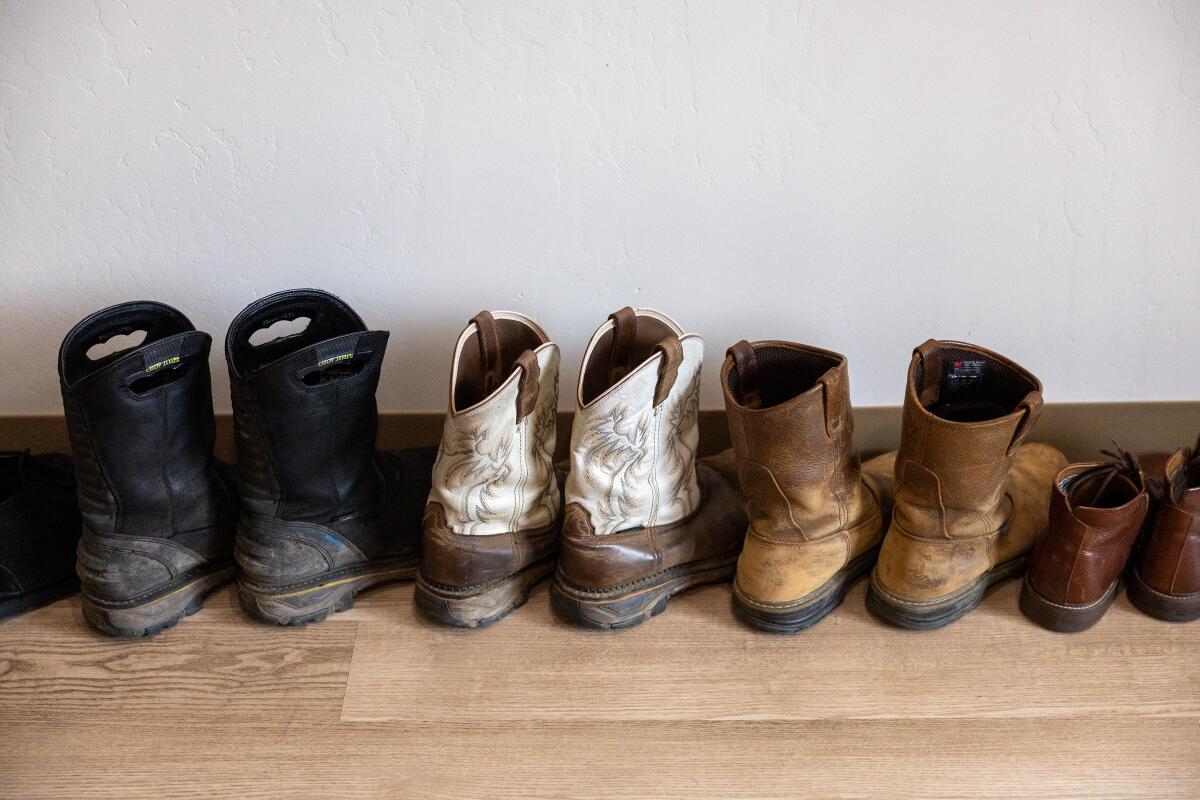
“It’s really just profound, and it has a uniqueness of its own,” Cline said of the setup.
Cline, who is Christian, feels connected to the church in a religious sense as well. He tries to be respectful of the building, knowing its history as a place of worship.
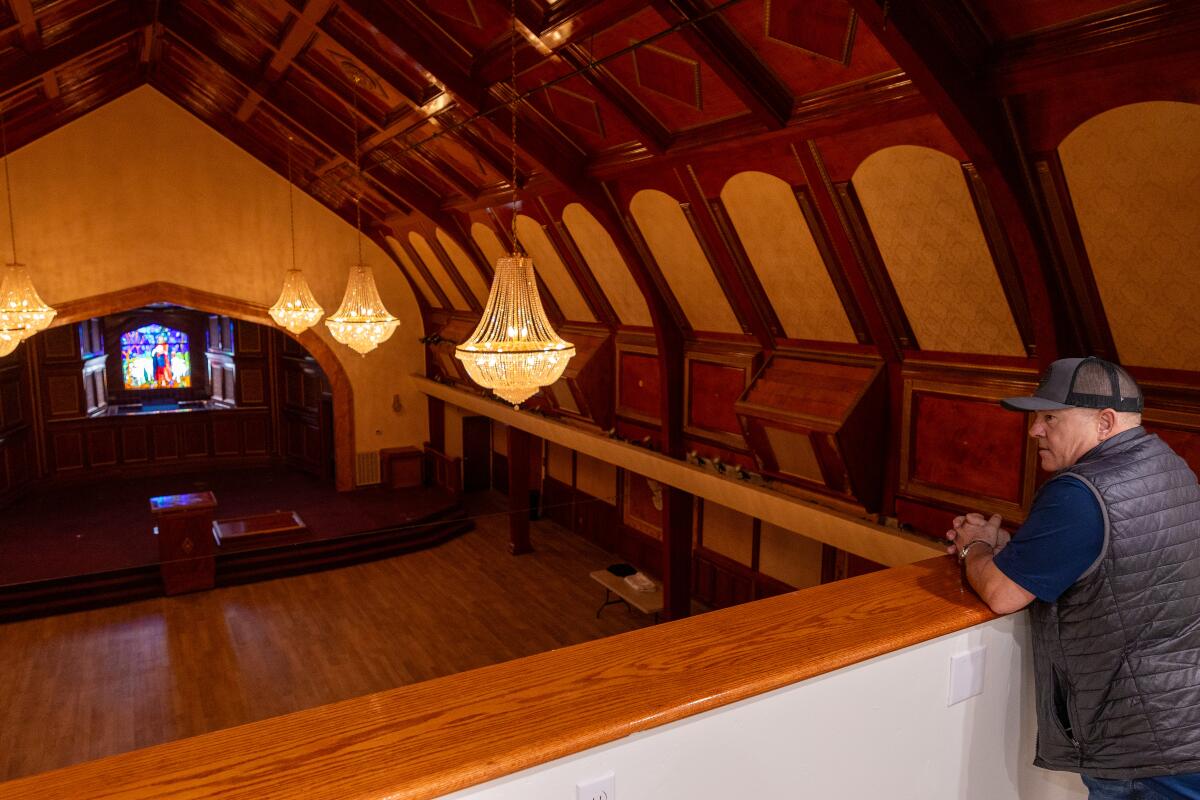
Project Cornerstone is one in a spate of recent efforts Kern County has undertaken to create affordable supportive housing options for homeless people and those at risk of being homeless. Those working with foster youths know all too well that housing instability is a danger they face as they age out of the system.
The county’s 2023 point-in-time count found 1,948 people lacked permanent housing, according to the Bakersfield-Kern Regional Homeless Collaborative. About 48% of the population was sheltered, a figure that’s been trending upward as the county has expanded emergency shelters and transitional housing initiatives. About 120 of the homeless counted were people younger than 24.
Martin, with Covenant Community Services, said the housing project is “stemming the tide of homelessness for foster youth.” Residents are assigned case managers and mentors to help them find educational and employment opportunities, and can learn job skills at the organization’s coffee shop.
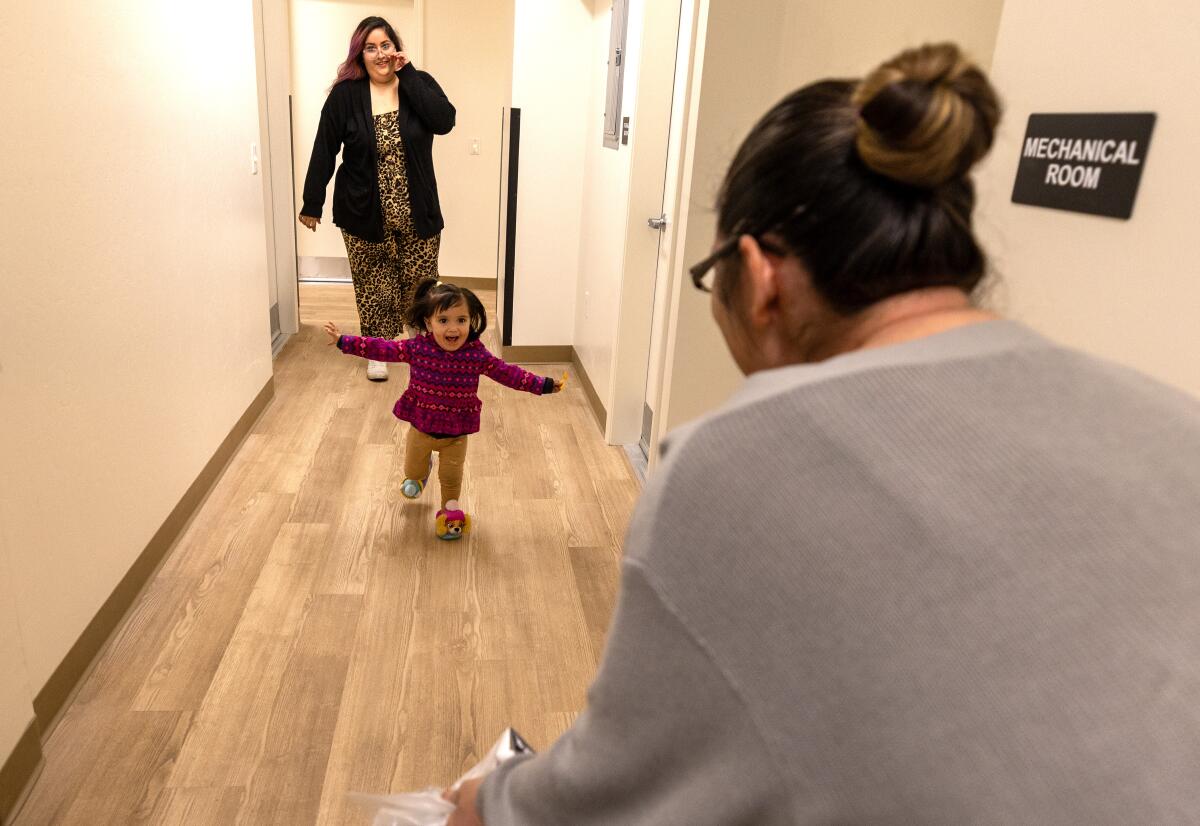
Isabel Medina, 23, is both on-site manager and a resident at the Project Cornerstone complex. At 13, she was removed from an abusive home and put in foster care. For years, she moved among foster families before aging out of the system at 18. She has struggled to maintain a stable job, working in the fields, at a mall, at Goodwill. She was homeless twice, and slept in her car for four months. At 21, she became pregnant with her daughter, Rosalinda.
With the help of a program manager at Covenant Community Services, Samantha Imhoof Tran, Medina was made on-site manager at Project Cornerstone.
Rosalinda celebrated her second birthday there in December, with a party in the old chapel. A stained glass image depicting a shepherd lit up the room. The two-year-old with a quick smile and high laugh ran up and down the stairs, and they danced on the stage, Medina said.
“It definitely can be spooky, especially at night when I have to check all the doors and make sure everything’s secured,” Medina said. “But when you fill this room up, it’s very hopeful and magical at the same time.”
More to Read
Sign up for Essential California
The most important California stories and recommendations in your inbox every morning.
You may occasionally receive promotional content from the Los Angeles Times.
